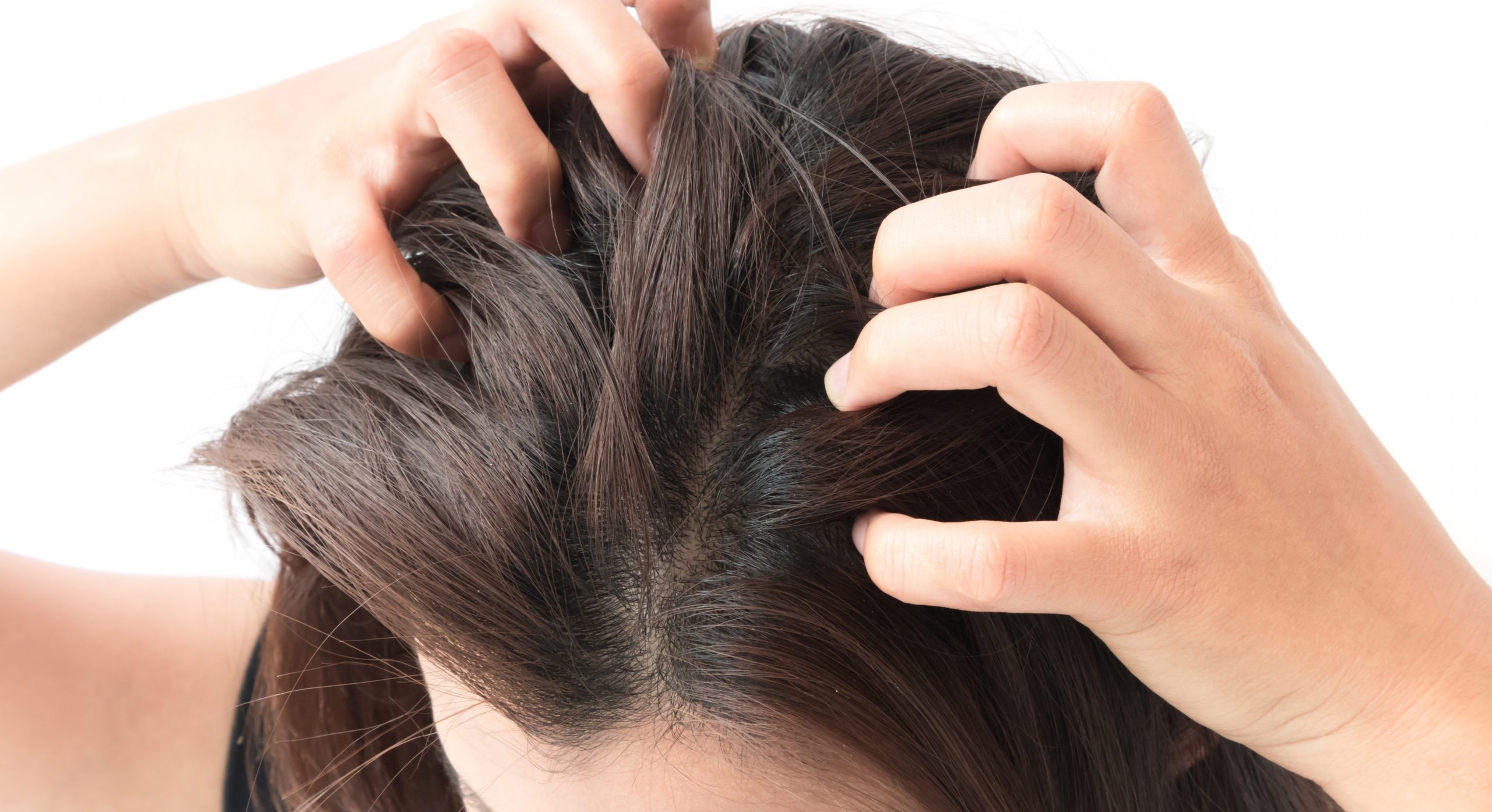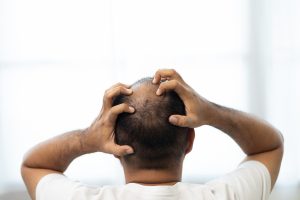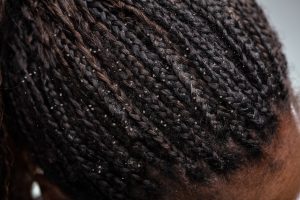What is seborrheic dermatitis?
Seborrheic dermatitis (sometimes called seb derm or seborrhea) most commonly presents with itchy, red to yellow, greasy, flaky patches of skin most commonly on the scalp and “t-zone” of the face (forehead, eyebrows, and around the nose). In skin of color, affected areas may be lighter or darker than the surrounding skin and redness may be minimal or absent. Dandruff is the most simple type of seborrheic dermatitis.
How does seborrheic dermatitis affect darker skin types?
Brown and black skin may have minimal redness and present more with symptoms like itching or burning. Patches of lighter colored skin (hypopigmentation) or darker colored skin (hyperpigmentation) are very common.
Who is affected most by seborrheic dermatitis?
Seborrheic dermatitis is incredibly common and affects people of all ages. In children it is commonly called cradle cap. It may be more common in skin of color. One study found that seborrheic dermatitis was most common among Black females. Infrequent use of shampoo may be a contributing factor. Many patients with HIV/AIDS have seborrheic dermatitis and very severe seborrheic dermatitis that does not respond to treatment may be a sign of HIV/AIDS.
What are the main risk factors for seborrheic dermatitis?
- Increased oil gland activity
- Skin of color (brown or black skin)
- Infrequent shampooing hair
- Conditions that weaken the immune system, such as HIV/AIDS
- Parkinson’s disease
- Stroke
- Alzheimer’s disease
- Depression
- Stress
- Insomnia
- Cold, low humidity environments
What causes seborrheic dermatitis?
Dermatologists believe that the main causes of seborrheic dermatitis are overproduction of oil and an overgrowth of a yeast called Malassezia.
How do I know if I have seborrheic dermatitis?
Most patients have scaling and flaking of the scalp, eyebrows, forehead, ears, and beard area. Redness may or may not be present. In brown or black skin, the areas are often lighter or darker than the surrounding skin. It is sometimes but not always itchy. A dermatology provider can diagnose you with seborrheic dermatitis by examining your skin. Many doctors do not have experience diagnosing or treating seborrheic dermatitis in skin of color. It is important to see someone who is an expert to ensure the right diagnosis and treatment for your skin type.
If a provider is unfamiliar with the way that seborrheic dermatitis can present in brown or black skin, they may make an incorrect diagnosis. This can lead to a delay in diagnosis and less optimal treatment.
What is the best treatment for seborrheic dermatitis in brown and black skin?
Seborrheic dermatitis tends to be a long term condition (chronic). There is no cure and the goal of treatment is to minimize symptoms. Treatments include anti-yeast shampoos and creams, topical anti-inflammatory ointments, oils, gels, creams, and shampoos. Studies have found that Black people prefer ointments or oils. Antidandruff shampoos although useful can be drying when used on Black (Afro-textured) hair. This is most often a problem in people who use heat or chemical relaxers. One study found that people with Black hair preferred ketoconazole foam to shampoo. Using a deep conditioner can be helpful to prevent dryness. Treatment should focus on the scalp rather than the hair, so patients should leave the product in contact with their scalp for at least 5-10 minutes to be effective.
Many cases of seborrheic dermatitis require prescription medications in order to obtain significant relief. Hypopigmentation (light patches) and hyperpigmentation (dark patches) usually improve with treatment, but this often takes time. One study found that pimecrolimus cream, a non-steroidal immune modulator, was effective at reducing hypopigmentation and treating symptoms.The schedule and types of medications your provider prescribes depends on how severe the symptoms are, where the disease is located, and your hair and skin type.
How can you prevent seborrheic dermatitis flares?
Certain lifestyle changes can help patients reduce flare ups:
- washing hair at least once a week to reduce buildup
- reducing the use of pomades or non-medicated oils to the scalp
- tracking triggers that cause flares to avoid them
- trying to reduce stress levels
- avoiding cold, low humidity weather
So how can people with brown and black skin skin prevent an itchy scalp?
Seborrheic dermatitis (dandruff) is the most common cause for an itchy scalp in people with skin of color. Prevention is key but sometimes prescription treatment is necessary. My Skin of Color specializes in the treatment of brown and black skin. Your provider will design a specialized regimen for your skin type. Click below to get started with your consultation today!



